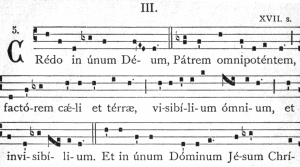Whenever I ask choral conductors about the lack of the octatonic’s representation in the choral repertoire, I seem to receive many eye-rolls, but no convincing answers beyond its difficulty to sing. What we broadly label as the octatonic has a rich and organic tradition within the Russian instrumental music tradition. It is hard to imagine that there is not already a body of vocal works that at least slip into large sections of “octatonic”. But I’ve yet to meet someone who can point me to such works.
Music Theory
In between my semesters of teaching theory at our local community college, I put significant works towards completing a concertante called Ragtime Dances for Marimba and Orchestra. The piece is inspired by the American dance music of the ragtime era, specifically the works promoted by the Castle dance duo. Since my piece is for a community orchestra, it is strongly tonal, diatonic, and tertian in nature. There are areas of the piece which my theory class would be quite comfortable analyzing, and there are areas that make use of a variety of modes and synthetic scales. One element common to each of the five dances is the octatonic scale:

This spring I wrote my thesis for my master’s of arts in composition. Much of the music I discussed used synthetic modes with no previous nomenclature, and I could not find an established, nor even existing, way of naming synthetic scales. There are well-known names for common practice modes (e.g., major or harmonic minor), the traditional church modes (e.g., Dorian or Phrygian), and a handful of synthetic scales (e.g., overtone or Neapolitan minor). The most universal way to define an arbitrary mode might be to use pitch class set notation, yet pitch class set notation is both cumbersome to use in prose and, by definition, an unordered collection that would not imply a tonic.
For my thesis, I adopted a naming convention for seven-note modes that combines descriptive names (sometimes shortened) for each of the two tetrachords that comprise the mode.


